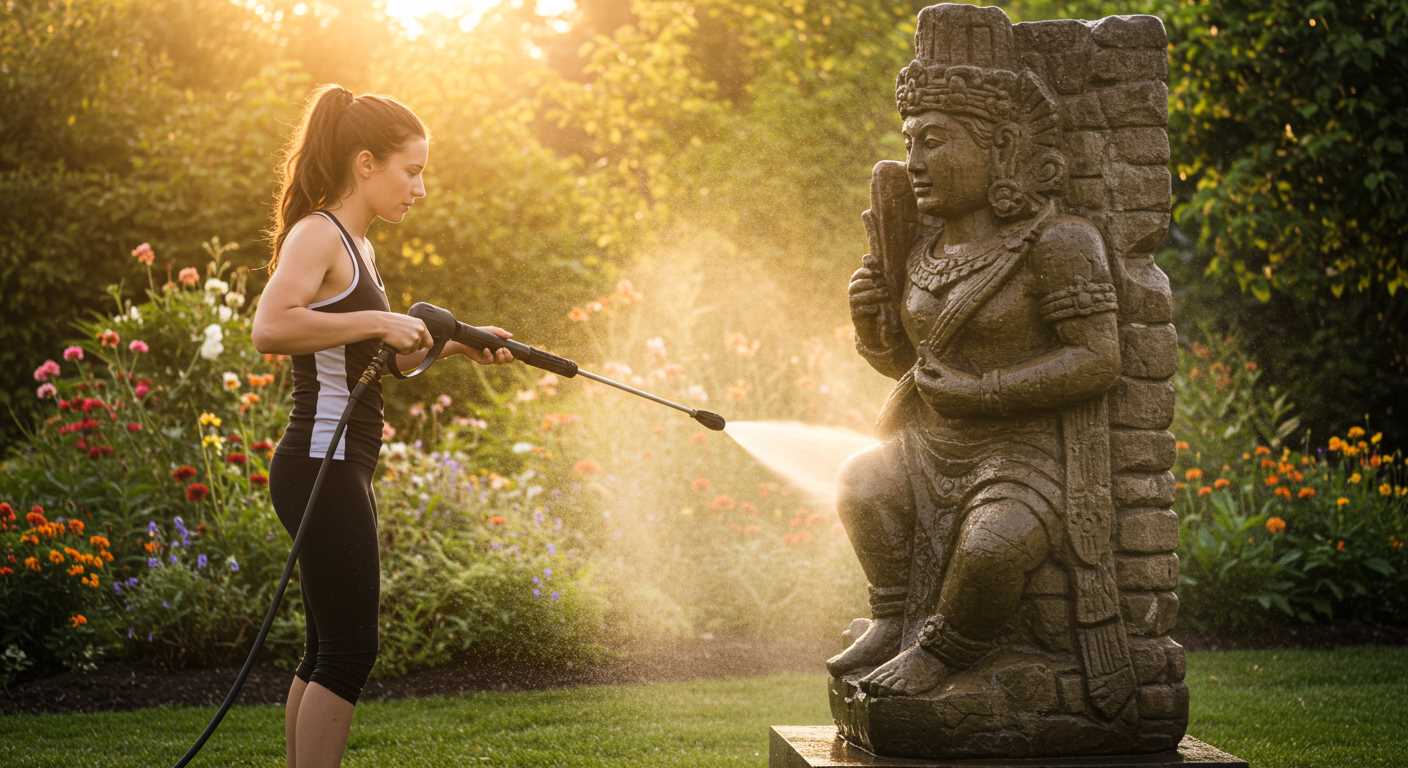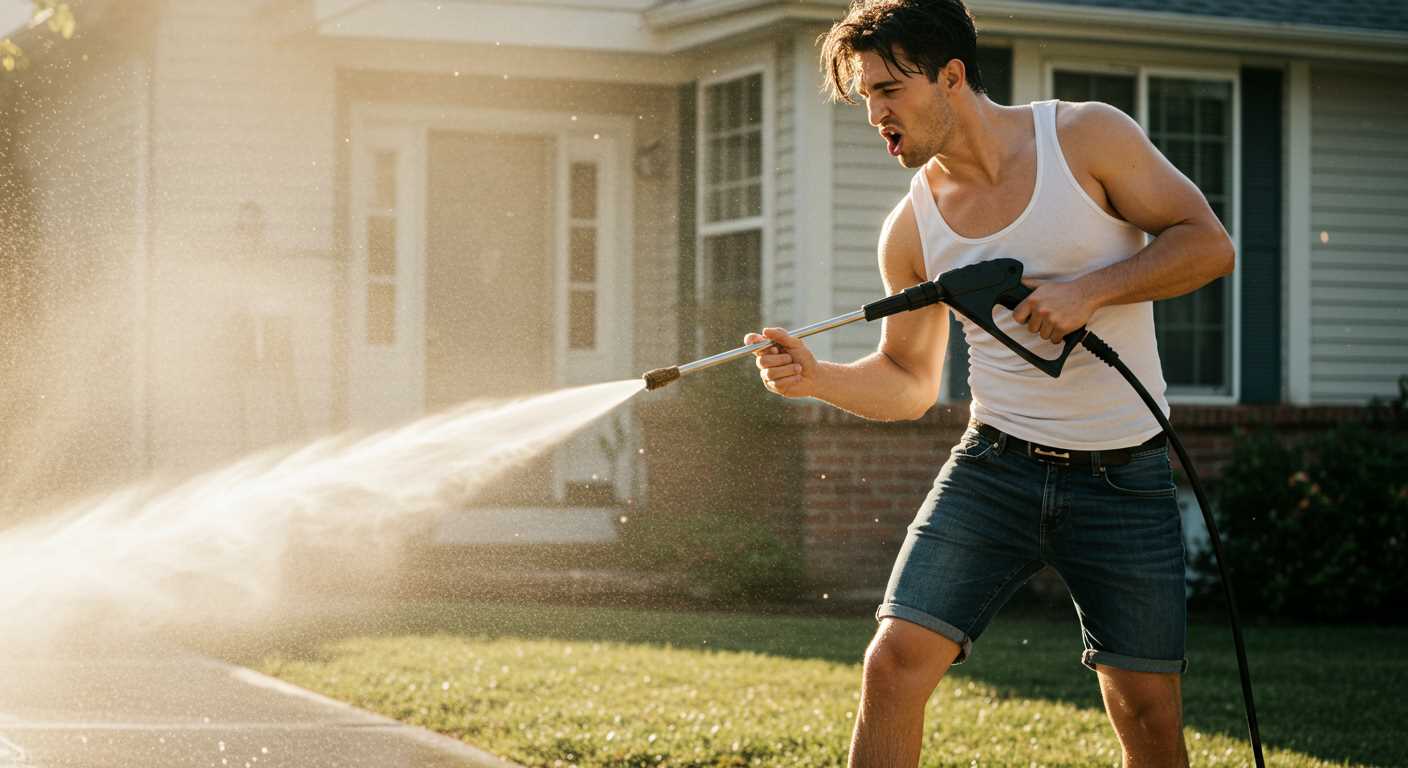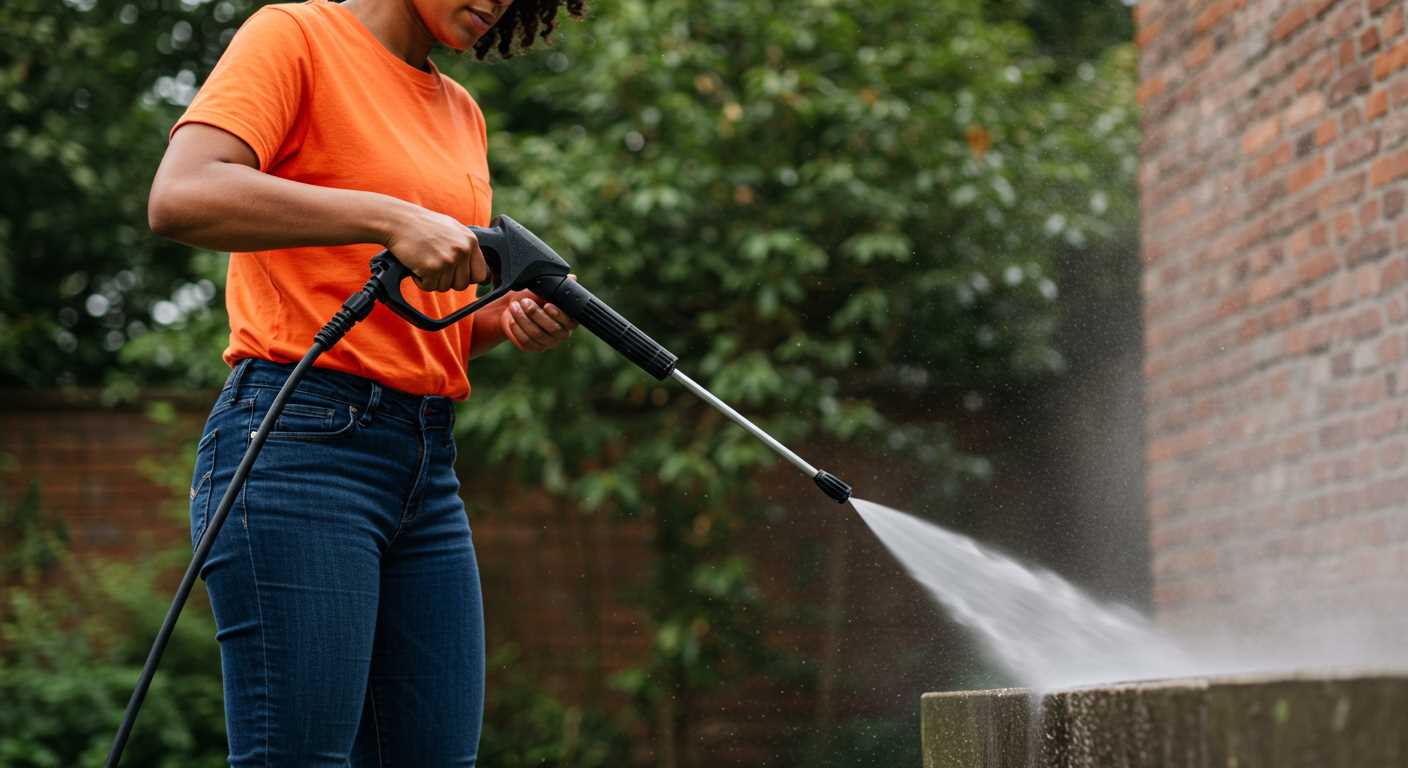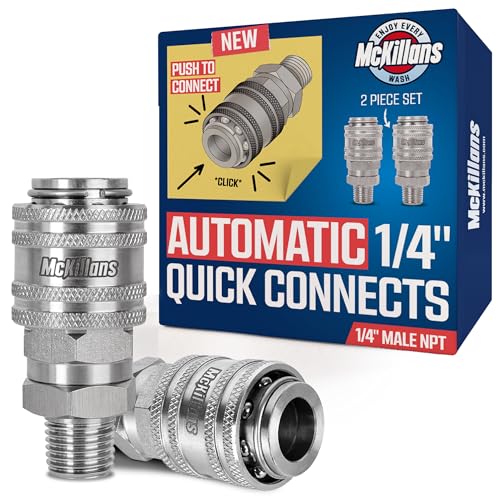



If you experience fluctuations in the water flow while using your cleaning device, the first step is to check the inlet filter. A clogged filter can restrict water supply, leading to inconsistent pressure. Remove the filter, clean it thoroughly, and reassemble it to see if this resolves the issue.
Next, inspect the hose for kinks or damage. A twisted or pinched hose can obstruct water flow, causing erratic behaviour. Ensure that the hose is laid out properly and is free of any cracks that could affect performance.
Another critical area to examine is the high-pressure nozzle. A blocked nozzle can significantly impact the output. Detach the nozzle and clean it with a pin or brush to remove any debris. This simple action often restores smooth operation.
Lastly, pay attention to the detergent intake tube. If this tube is submerged too deeply into the solution or is blocked, it may cause surging. Adjust the tube’s position or clear any obstruction to promote a stable flow of detergent, which helps maintain consistent pressure during use.
Understanding Fluctuations in Water Pressure
For a consistent output, ensuring a steady water supply is vital. Check your garden hose for kinks or blockages and ensure the water source is adequate. A 3/4-inch diameter hose is typically recommended for optimal flow.
Inspect the filter located at the water inlet. A clogged filter can impede flow, leading to inconsistent operation. Clean or replace it if necessary to maintain smooth functionality.
Evaluating the Nozzle and Spray Gun
The nozzle’s size affects the pressure and flow rate. If using a nozzle that restricts flow too much, it may result in irregular spraying patterns. Opt for the correct size nozzle for your cleaning tasks to prevent performance issues.
Also, examine the spray gun for blockages or wear. A defective trigger assembly can cause pressure inconsistencies. If the trigger does not fully engage, consider replacing it to restore seamless operation.
Assessing the Pump and Components
Regularly check for air leaks in the hose connections. Any air intake can lead to pressure drops and surging behaviour. Tightening connections should be the first step before exploring repairs or part replacements.
Lastly, inspect the pump itself. Wearing or damage to internal parts may disrupt performance. If you’ve verified other components and issues persist, consider seeking professional help for pump maintenance or replacement.
Understanding Surge: What It Means for Your Equipment
Experiencing fluctuations in water flow can indicate underlying issues with your cleaning apparatus. These irregularities often arise from a combination of factors, each of which can affect the performance of the unit.
Common Causes of Irregular Performance
A malfunctioning inlet valve can lead to inconsistencies in water intake, resulting in a pulsing effect. Inspecting and cleaning the inlet valve periodically can resolve this problem. Also, ensure that the water supply is adequate; low pressure from your source can contribute to fluctuations. Verify that hoses are not kinked or blocked, as restrictions in flow can cause similar issues.
Pump and Seal Integrity

The condition of the pump itself plays a critical role. Worn-out seals or a failing pump can disrupt normal operation, leading to uneven pressure. I recommend checking for leaks or signs of wear and replacing components as needed. Regular maintenance can prolong the life of your unit and mitigate the occurrence of these problems.
Pay attention to the type of detergent used; overusing or using the wrong type can clog the system and lead to performance problems. Always follow manufacturer guidelines for soap applications.
In conclusion, understanding the causes of these flow inconsistencies will aid in maintaining your cleaning device’s efficiency. Addressing each of these factors systematically is key to achieving optimal operation and longevity of your equipment.
Common Causes of Pressure Cleaner Fluctuation
Clogged filters are a prime culprit, blocking the flow of water and leading to inconsistent performance. Regular checks and cleaning are crucial to maintain optimal flow. If the inlet screen is dirty or damaged, it’s worth replacing it to ensure smooth operation.
Another frequent issue arises from air leaks in the suction side. Inspect hoses and fittings for cracks or loose connections. Any break in the line can introduce air, causing fluctuations in pressure. Tightening connections or replacing compromised hoses can resolve this.
Inadequate water supply contributes significantly to the problem. Make sure the water source provides sufficient pressure and volume. A hose that is too long or kinked can also hinder performance. Consider using a shorter, high-quality hose for better flow.
Additionally, a malfunctioning unloader valve can create inconsistent pressure. This valve is responsible for regulating flow within the device. If it fails, the flow may fluctuate. Inspecting and replacing this component, if necessary, can restore stable pressure.
Lastly, keep in mind that using the wrong nozzle or attachment can significantly affect performance. Using a nozzle that is too narrow can create excessive pressure, leading to surging. Always match nozzles with the intended task for the best results.
How to Check the Water Supply and Its Impact
.jpg)
Inspect the water source to ensure proper flow. A minimum of 20 PSI is necessary for optimal operation. If the supply is inadequate, it can lead to fluctuations and erratic performance.
Steps to Verify Water Supply

- Check the hose for kinks or blockages that may restrict flow.
- Ensure that the water tap is fully open. Low flow rates often stem from partially closed valves.
- Use a flow meter, if available, to assess the water supply rate.
- Inspect filters and strainers to avoid clogs that may affect water intake.
Consequences of Inadequate Water Supply

Insufficient water can lead to various issues:
- Frequent cycling of the motor, causing it to work harder and potentially lead to overheating.
- Inconsistent spray patterns, resulting in subpar cleaning outcomes.
- Increased wear and tear on internal components due to stress from erratic operation.
Regular maintenance of the water supply system ensures that the equipment performs reliably and extends its lifespan. Staying proactive can prevent common issues that affect efficiency and functionality.
Identifying and Cleaning Clogged Filters
A significant reason for irregular performance in a cleaning device can stem from blocked filters. Regular maintenance should include examining and cleaning these components to ensure optimal operation.
Steps to Identify Clogged Filters
To locate a distressed filter, start by disconnecting the unit from its power source. Inspect the inlet filter, typically found where the water line attaches. If any debris or buildup is present, it’s a clear sign of blockage.
Additionally, check the screen filter located in the water inlet of the device. If this is obscured, it can impede water flow, leading to erratic dispensing. Always refer to the manufacturer’s manual for specific diagrams that indicate filter locations.
Cleaning Techniques

Once you’ve identified a clogged filter, cleaning can be straightforward. Use a soft brush or a cloth to gently remove dirt or residue. Rinse the filter under running water. For stubborn blockages, a mild detergent may assist, but ensure all soap is eliminated before reinstallation.
After cleaning, reinstall the filter securely and reconnect the water supply. Testing the unit for consistent performance should follow. If issues persist, further inspection or replacement of components may be necessary.
Examining the Pressure Washer Hose for Issues
Inspect the hose for bends or kinks that can restrict water flow. A smooth, straight path is crucial for maintaining optimal performance. Any deviation can lead to inconsistent pressure during use.
Next, check for leaks or cracks along the length of the hose. Even small punctures can cause significant drops in output pressure. Conduct a visual inspection and feel along the hose to detect any weak spots. If you find damage, replace the hose promptly.
For a thorough review, detach the hose from both the inlet and outlet connections. Verify that the fittings are secure and not corroded, as loose or rusted connections can also contribute to pressure fluctuations.
Additionally, clean the hose’s interior. Debris accumulation inside may lead to blockages. Use a specialised hose cleaning tool or a mixture of soapy water to flush out any obstructions. After cleaning, ensure that the hose is completely dry before reattaching.
Refer to the table below for common issues related to the hose and their solutions:
| Issue | Possible Cause | Solution |
|---|---|---|
| Kinks or bends | Improper storage or handling | Store in a straight position, avoiding tight bends |
| Leaks | Punctures or worn-out materials | Replace damaged sections or entire hose |
| Weak connections | Corrosion or loose fittings | Tighten or replace connectors as needed |
| Clogs | Debris buildup | Flush with water or use a cleaning tool |
Regular examination and maintenance of the hose can prevent performance issues and ensure a consistent and powerful cleaning experience. Make it a habit to inspect it before and after every use.
Understanding the Role of Pump Valves in Surging
Pump valves significantly influence the consistent operation of your cleaning device. If you encounter fluctuations in performance, the first area to inspect is the valve system. When these valves malfunction or become obstructed, they can lead to inconsistent water flow, resulting in performance issues.
Begin by examining the inlet and outlet valves. These components manage water entry and exit from the pump. If they are stuck, damaged, or dirty, they might not open or close properly, causing interruptions in water delivery. Routine maintenance should include checking these valves for signs of wear or obstruction.
Consider the check valves as well. Their role is to prevent backflow, ensuring a steady supply of water during operation. If a check valve fails, it can lead to pressure fluctuations. I often recommend replacing these valves if you notice any damage or if they show signs of excessive wear.
Lastly, ensure that all valve seals are intact. Worn or damaged seals can cause leaks, which can have a direct effect on efficiency and pressure stability. Regularly inspect these seals and replace them as needed to maintain optimal performance.
Troubleshooting Electrical Issues Affecting Performance
Start by inspecting the power supply. Ensure that the outlet provides consistent voltage, as fluctuations can impair operation. Use a multimeter to measure voltage at the plug; it should be close to 230V, typically found in household settings. If readings are low, consider connecting to a different outlet or consult an electrician.
Examine the power cord for any visible damage, such as fraying or cuts. Damaged cords can lead to inconsistent power delivery. Replace any problematic cords immediately. Ensure all connections between the appliance and the power source are secure; loose connections can create resistance, impacting overall functionality.
Checking and Testing Components
Look into the internal components affecting electricity flow. The on/off switch and circuit breaker should be functional. Test the switch with a multimeter; a failed switch can prevent the system from powering up properly. If the circuit is tripped, resetting it may resolve interruptions caused by overload.
Inspect the pressure generated by the pump motor. A malfunctioning motor may not receive enough power due to internal faults or wear. If you suspect motor issues, open the casing and examine for burnt wires or unusual odours. In such cases, consulting a technician is advisable, as replacing or repairing a motor can be complex.
When to Seek Professional Help for Your Karcher

If experiencing persistent issues with your cleaning device, it’s time to consult a technician. Here are the signs indicating professional assistance is needed:
Signs It’s Time for Expert Attention
- Unresolved performance issues after basic troubleshooting.
- Continuous leaking, unusual noises, or burning odours.
- Frequent trips to reset the circuit breaker.
- Malfunctioning components such as pumps or motors.
- Inability to achieve expected pressure despite correct setup.
Why Professional Service is Worth Considering
- Access to specialised tools and diagnostic equipment.
- Expertise in identifying complex problems beyond user knowledge.
- Warranty protection and assurance of quality repairs.
- Potential to prevent further damage and additional costs.
Should you observe any of the signs above, contacting a certified service provider or technician is a wise choice to ensure longevity and optimal performance of your cleaning equipment.











